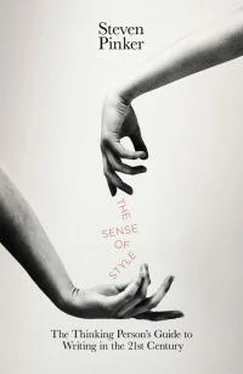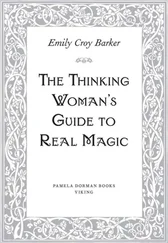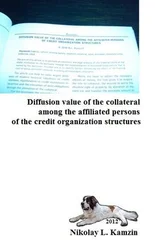ain’t . No one needs to be reminded that ain’t is frowned upon. The prohibition has been drilled into children for so long that they have made it into a jump-rope rhyme:
Don’t say ain’t or your mother will faint.
Your father will fall in a bucket of paint.
Your sister will cry; your brother will die.
Your dog will call the FBI.
I like this poetic warning of what will happen if you violate a prescriptive rule better than Dwight Macdonald’s prophecy that the bounded waters will lift their bosoms higher than the shores and make a sop of all this solid globe. But both warnings are overstatements. Despite the taint of ain’t from its origin in regional and lower-class English, and more than a century of vilification by schoolteachers, today the word is going strong. It’s not that ain’t is used as a standard contraction for negated forms of be, have, and do; no writer is that oblivious. But it does have some widely established places. One is in the lyrics of popular songs, where it is a crisp and euphonious substitute for the strident and bisyllabic isn’t, hasn’t, and doesn’t, as in “It Ain’t Necessarily So,” “Ain’t She Sweet,” and “It Don’t Mean a Thing (If It Ain’t Got That Swing).” Another is in expressions that are meant to capture homespun truths, like If it ain’t broke don’t fix it, That ain’t chopped liver, and It ain’t over till it’s over. This use of ain’t may be found even in relatively formal settings to emphasize that some fact is so obvious as to be beyond further debate—as if to say, “Anyone with a lick of sense can see that.” Hilary Putnam, perhaps the most influential analytic philosopher of the second half of the twentieth century, published a famous article called “The Meaning of Meaning” in a learned academic volume. At one point he summed up his argument with “Cut the pie any way you like, ‘meanings’ just ain’t in the head!” As far as I know, his mother did not lose consciousness.
and, because, but, or, so, also . Many children are taught that it is ungrammatical to begin a sentence with a conjunction (what I have been calling a coordinator). Because they sometimes write in fragments. And are shaky about when to use periods. And when to capitalize. Teachers need a simple way to teach them how to break sentences, so they tell them that sentences beginning with and and other conjunctions are ungrammatical.
Whatever the pedagogical merits may be of feeding children misinformation, it is inappropriate for adults. There is nothing wrong with beginning a sentence with a coordinator. As we saw in chapter 5, and, but, and so are among the commonest coherence markers, and they may be used to begin a sentence whenever the clauses being connected are too long or complicated to fit comfortably into a single megasentence. I’ve begun about a hundred sentences with and or but in the book so far, such as “And we all know how successful Strunk and White were in forbidding to personalize, to contact, and six people, ” which capped off a series of sentences about purists who failed to change the language.
The coordinator because can also happily sit at the beginning of a sentence. Most commonly it ends up there when it introduces an explanation that has been preposed in front of a main clause, as in Because you’re mine, I walk the line. But it can also kick off a single clause when the clause serves as the answer to a why- question. The question can be explicit, as in Why can’t I have a pony? Because I said so. It can also be implicit in a series of related assertions that calls for a single explanation, which the author then provides, as in Aleksandr Solzhenitsyn’s reflection on the twentieth-century’s genocidal tyrants:
Macbeth’s self-justifications were feeble—and his conscience devoured him. Yes, even Iago was a little lamb too. The imagination and the spiritual strength of Shakespeare’s evildoers stopped short at a dozen corpses. Because they had no ideology.
between you and I .This commonly heard phrase is often held out as an excruciating grammatical blunder. I spelled out the reason in chapter 4 when discussing the example Give Al Gore and I a chance to bring America back. Rigorous tree-thinking demands that a complicated phrase behave in the same way as a simpler phrase in the same position. The object of a preposition like between must be in the accusative case: we say between us or between them, not between we or between they. Therefore, according to this way of thinking, the pronouns in a coordination must also be accusative: between you and me. The phrase between you and I appears to be a hypercorrection, which arose when speakers who were corrected for Me and Amanda are going to the mall took away the crude moral that you should always say X and I, never me and X or X and me.
But the conviction that between you and I is an error needs a second look, together with the explanation that the phrase is a hypercorrection. When enough careful writers and speakers fail to do something that a theory of syntax says they should, it could mean that it’s the theory that’s wrong, not the writers.
A coordination phrase is a strange entity, and the logic of trees that applies elsewhere in English syntax does not apply to it. Most phrases have a head: a single word inside the phrase that determines its properties. The phrase the bridge to the islands has the head bridge, which is a singular noun, so we call the phrase a noun phrase, interpret it as referring to a kind of bridge, and treat the phrase as singular—that’s why everyone agrees that one should say The bridge to the islands is crowded, not are crowded . Not so for a coordination, which is headless: it cannot be equated with any of its components. In the coordination the bridge and the causeway, the first noun phrase, the bridge, is singular, and the second noun phrase, the causeway, is also singular, but the coordination as a whole is plural: The bridge and the causeway are crowded, not is crowded.
Perhaps the same is true of case: the case that applies to a whole coordination phrase is not necessarily the same as the case that applies to its parts. When we strive to apply tree-thinking as we write, we may furrow our brows and consciously force the parts to harmonize with the whole. But because coordination phrases are headless, the harmony is not a requirement of our intuitive grammar, and few of us can consistently pull it off. Thus even an assiduous speaker might say Give Al Gore and I a chance or between you and I. The Cambridge Grammar suggests that in contemporary English many speakers have settled on a rule that allows a nominative pronoun like I or he after the coordinator and. And even more of them—the ones who say Me and Amanda are going to the mall —allow an accusative pronoun before and. It is a natural preference, because the accusative is the default case in English, occurring in a motley range of contexts (such as the bare exclamation Me!? ), pretty much anywhere it is not preempted by the more selective nominative or genitive.
You might think that the standard prescriptive recommendation, with its ironclad application of tree analysis, is more logical and elegant, and that we should all just try harder to implement it and thereby make our language more consistent. But when it comes to coordination, this is an unrealizable dream. Not only does the grammatical number of a coordination systematically differ from the number of the nouns inside it, but sometimes the number and person of a coordination cannot be determined from the tree at all. Which alternative in each of these pairs of sentences is correct? 10
Читать дальше












